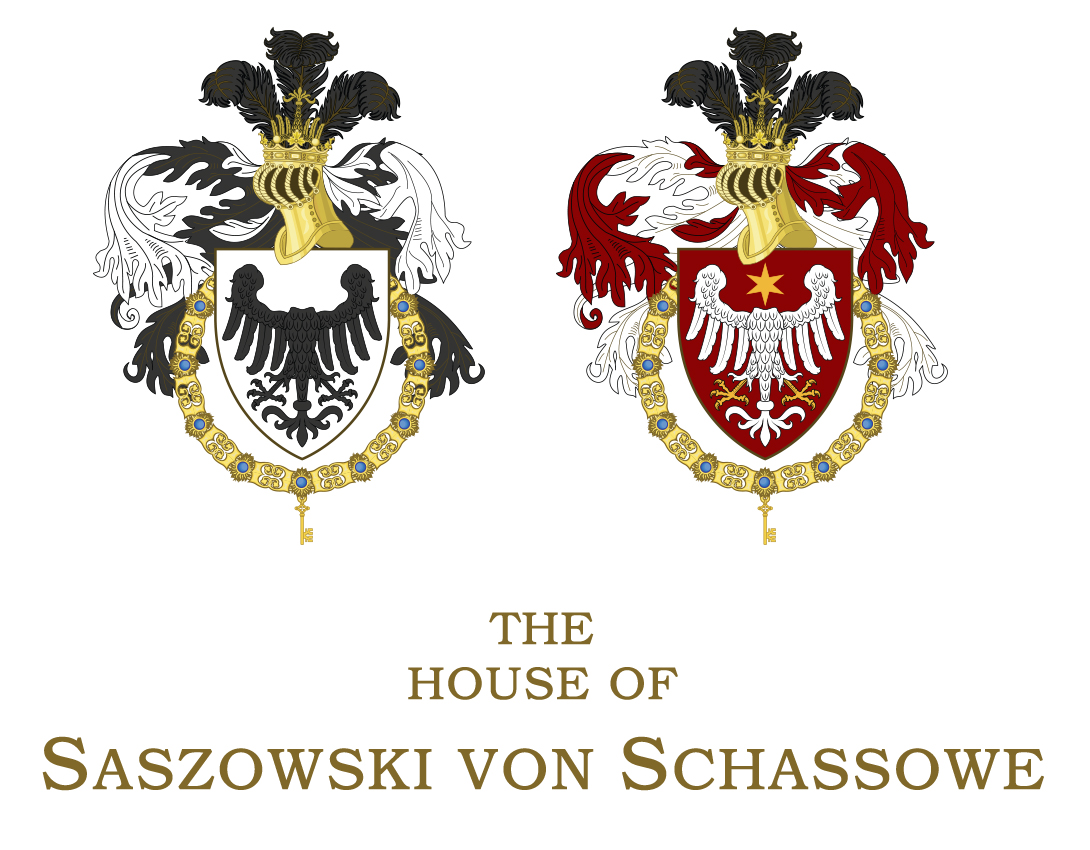
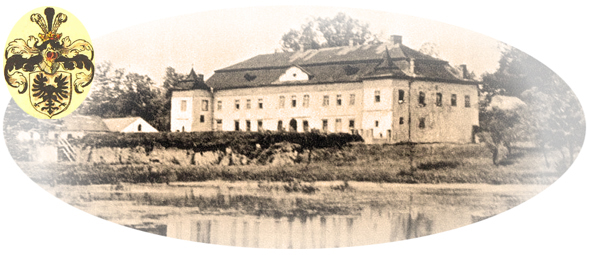
THE
HOUSE OF
SASZOWSKI VON SCHASSOWE
 Welcome to the official website of the historic German, Bohemian, Moravian, and Silesian noble House of Saszowski von Schassowe.
Welcome to the official website of the historic German, Bohemian, Moravian, and Silesian noble House of Saszowski von Schassowe.
For over nine centuries, our family’s history has been intertwined with the legacy of Saxony (Sachsen), rooted in the medieval Margraviate and Burgraviate of Meissen (Markgrafschaft und Burggrafschaft Meißen). This frontier region of the Holy Roman Empire, within the Kingdom of Germany (Regnum Teutonicum), served as the foundation from which our noble House extended its domains and influence across the Crown of Bohemia, the Margraviate of Moravia, the Crown of Poland, and the Duchies of Silesia.
Now in its 27th generation since the dawn of the 12th century, the head of the House, Fürst Saszowski von Schassowe, of Gierałtowice (Geraltowitz), Palczowice (Palczowitz), Wilamowice (Wilmesau), and other estates, welcomes you to explore the centuries-old history, traditions, and enduring heritage of our noble lineage.
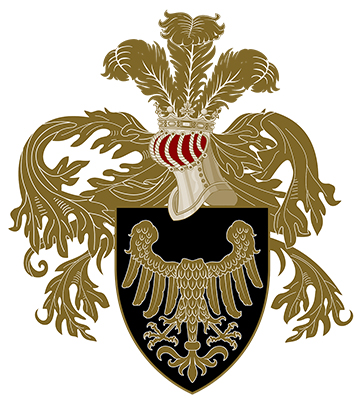
 Medieval Foundations (12th–14th Centuries)
Medieval Foundations (12th–14th Centuries)
From our nucleus since the Middle Ages as eminent medieval knights, princely lords, royal burgraves, imperial and royal ambassadors, ecclesiastics, statesmen, and lord chief justices, to bold noblemen embarking on Renaissance explorations during the Age of Discovery, here, you can experience a series of brief glimpses into our illustrious history and heritage, spanning from before AD 1200 through to modern times. This enduring legacy is preserved and illustrated through our private family archives, medieval chronicles, and imperial, royal, and episcopal historical deeds.
Combining tradition with modernity, our website also aims to outline our private philanthropic endeavours. With support from our family's business interests and engagements, our present-day scions are passionately committed to our key charitable cause—providing healthcare for children and individuals of all ages with vision and hearing impairments across various regions of the world. This dedication extends to the younger members of our noble House, who share an equally fervent commitment to diverse nature and wildlife conservation initiatives.
 February 2012: A junior member of the House of Saszowski von Schassowe, Anisha Countess Saszowska von Schassowe, encircled by royal close protection officers, speaking privately with Queen Elizabeth II; conveying a flower bouquet and extending felicitations on Her Majesty's Diamond Jubilee as the Queen departs Sandringham House Estate in Norfolk for Buckingham Palace, London.
February 2012: A junior member of the House of Saszowski von Schassowe, Anisha Countess Saszowska von Schassowe, encircled by royal close protection officers, speaking privately with Queen Elizabeth II; conveying a flower bouquet and extending felicitations on Her Majesty's Diamond Jubilee as the Queen departs Sandringham House Estate in Norfolk for Buckingham Palace, London.
Our Ancestral Family History: Short Introduction
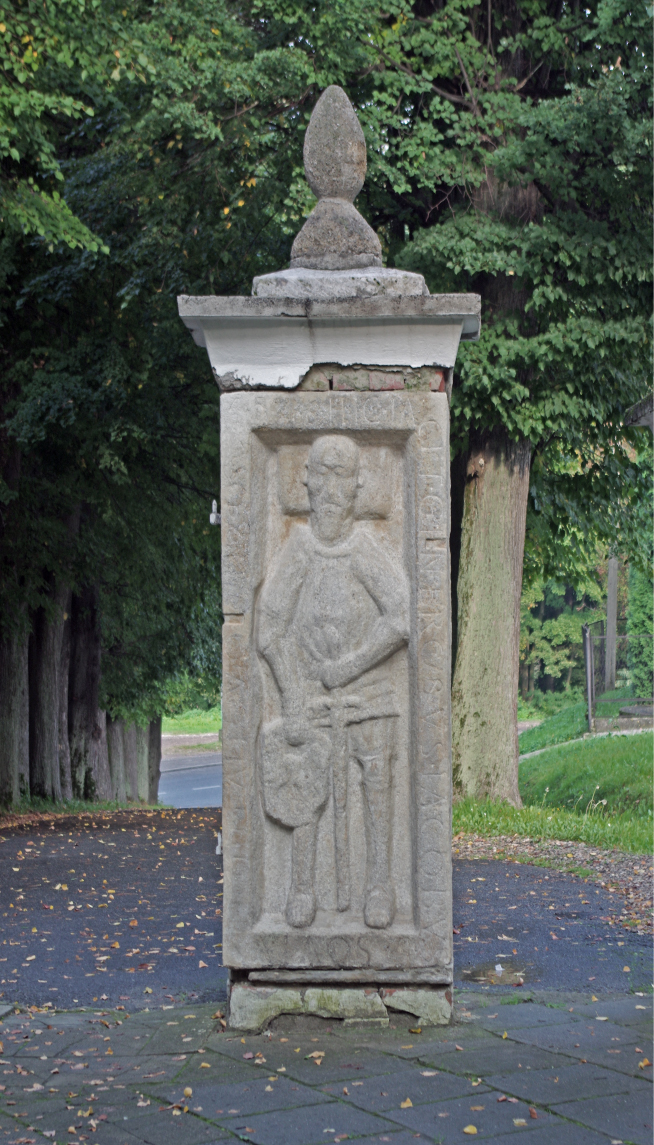 The House of Saszowski von Schassowe is a distinguished and venerable European noble family of Roman-German princely (fürstliche) origin. As one of the oldest European dynasties (Uradel) and medieval knights proper of the Holy Roman Empire, our family held a crucial role in the frontier borderland of the Margraviate of Meissen (Markgrafschaft Meißen) and served as protectors of the king's Burgraviate of Meissen (Burggrafschaft Meißen) in the Kingdom of Germany (Regnum Teutonicum).
The House of Saszowski von Schassowe is a distinguished and venerable European noble family of Roman-German princely (fürstliche) origin. As one of the oldest European dynasties (Uradel) and medieval knights proper of the Holy Roman Empire, our family held a crucial role in the frontier borderland of the Margraviate of Meissen (Markgrafschaft Meißen) and served as protectors of the king's Burgraviate of Meissen (Burggrafschaft Meißen) in the Kingdom of Germany (Regnum Teutonicum).
Over time, our family's eminence extended across the Crown of the Kingdom of Bohemia, the Margraviate of Moravia, the Crown of the Kingdom of Poland, and the Duchies of Silesia. We are among the few pre-eminent knights and nobility of central Europe who marched mounted alongside and delegated vicegerent to a succession of emperors of the Holy Roman Empire and kings of central-Europe. Recorded in prestigious medieval manuscripts such as the 15th-century 'Grand Knights Armorials of the Golden Fleece and Europe' (Grand Armorial équestre de la Toison d'Or et de l'Europe) by the Burgundian King of Arms—Jean Le Fèvre de Saint-Remy, preserved at the Bibliothèque de l'Arsenal in Paris.
In 1297, our noble House and family were furthermore posthumously honoured by Henry III, Duke of Głogów, in recognition of our ancestors' fearless bravery and unwavering loyalty. During the Battle of Legnica in 1241, our ancestors fought with blood and life as the vanguard of mounted knights dispatched by King Wenceslaus I of Bohemia—answering the personal request of Henry III's late grandfather, Henry II the Pious, Duke of Silesia and High Duke of Poland, to repel the first Mongol invasion of Poland. This pivotal conflict marked a significant moment in the defense of Central Europe, solidifying our noble House's enduring tradition of knightly service.
During the Middle Ages, our noble House and family were also designated by King Wenceslaus II of Bohemia as the fiduciary and to the senior royal court appointment of Vicegerent and High Chamberlain of Greater Poland (lat. Camerarius regni Polonie, Ger. Kämmerer des Reiches Polen, Pol. Podkomorzy nadworny koronny). At the same time, at the turn of the 1300s, our family were also designated Gubernator (Statthalter) and Captain-General (Hauptmann) of the Duchy of Kuyavia (Herzogtum Kujawien), and the Duchy of Pomerania (Herzogtum Pommern).
Later during the Middle Ages, designated by the King of Poland to the senior royal court appointment of Royal Burgraves of Kraków (lat. Magnus Procurator arcis nostrae Cracoviensis, Ger. Burggraf von Krakau, Pol. Burgrabia krakowski), entrusted with the command and defence of Wawel Royal Castle and the city of Kraków—Poland's historical capital city since AD 1038. Additionally, Royal Castellans of the strategically vital fortress defence castellany of Santok (Zantoch), a crucial medieval border stronghold claimed by Poland. Gallus Anonymus, in medieval Latin literature, described Santok as a fortress and the key to the Kingdom of Poland within the Margraviate of Brandenburg.
In 1449, members from our noble House were appointed Governor and Captain-General (Ger. Hauptmann, Cze. Hetman) of the Duchy of Pless (Herzogtum Pleß), and later the Duchy of Krnov (Herzogtum Jägerndorf). During the 1500s, we were entrusted with the prestigious role of Commander (Rittmeister) of the King's Life Guards—King Sigismund I of Poland's personal bodyguard and household cavalry of knights.
During the 16th century, appointed royal envoy (ambassador) to King Sigismund I of Poland, and on personal recommendation of Ferdinand I, the Holy Roman Emperor, and Piotr Gamrat, the Archbishop of Gniezno and Primate of Poland, dispatched as royal emissary to personally engage with Pope Paul III at the Vatican in Rome, King John I of Hungary, the Voivode of Transylvania, Prince Petru IV Rareș of Moldavia, and Sultan Suleiman I of the Ottoman Empire in Constantinople.
In 1539, a distinguished member of our noble House was appointed and ordained 14th Bishop of the Roman Catholic Diocese of Kamianets (Dioecesis Camenecensis Latinorum). The ordination was conducted in Rome by the principal consecrator, Cardinal-Bishop Antonio Pucci. At the time, Kamianets stood as one of the most influential cities in the Crown of the Kingdom of Poland. This was not the first instance in which our lineage had been recognised for its spiritual leadership.
 Nearly two centuries earlier, in the 1300s, our gracious Agnes von Schassowe held the esteemed position of Prioress of the Order of St Mary Magdalene Convent in Hayne (Großenhain), within in the Margraviate of Meissen (Saxony). Her unwavering devotion and service remain a lasting inspiration, serving as a poignant reminder of our family's deep-rooted tradition of faith and dedication.
Nearly two centuries earlier, in the 1300s, our gracious Agnes von Schassowe held the esteemed position of Prioress of the Order of St Mary Magdalene Convent in Hayne (Großenhain), within in the Margraviate of Meissen (Saxony). Her unwavering devotion and service remain a lasting inspiration, serving as a poignant reminder of our family's deep-rooted tradition of faith and dedication.
From the High Medieval Period (High Middle Ages), our noble House and family performed significant historical cross-border roles across various territories. In the Holy Roman Empire, within the Electorate of Saxony (Kurfürstentum Sachsen), our influence extended from our ancestral family seat and castle-palace in the Margraviate of Meissen. Our presence extended to the Crown of the Kingdom of Bohemia, the early history of the Crown of the Polish Kingdom, and the Margraviate of Moravia.
Over time, our reach expanded to the Kingdom of Hungary, Royal Prussia, the Polish–Lithuanian Commonwealth, and the state of Muscovy (Tsardom of Muscovy). Through our extended territorial domains and lordships across the Duchies of Silesia, we were recognised for our pre-eminence as knights, princely lords, king's ambassadors, royal burgraves, and imperial and royal courtiers. As recorded in a dictum by Maximilian II, Holy Roman Emperor, our family "led several thousand people in Hungary on his behalf".
Building on this legacy of influence and pre-eminence, our noble House and family were trusted confidants and counsel to a succession of Holy Roman Emperors and Kings of central Europe. We were one of the few pre-eminent members of Poland's nobility and the King's Council (senate), signatory to the historical Warsaw Confederation act of 28 January 1573—the first act of religious tolerance in Early Modern Europe, now safeguarded as a UNESCO Memory of the World heritage document.
Additionally, we stood as witnesses and signatory to the historical Treaty of Kalisz in 1343, a pivotal agreement between King Casimir III the Great of Poland and Ludolf König von Wattzau, grand commander (grandmaster) of the Teutonic Knights Order and the State of the Teutonic Order.
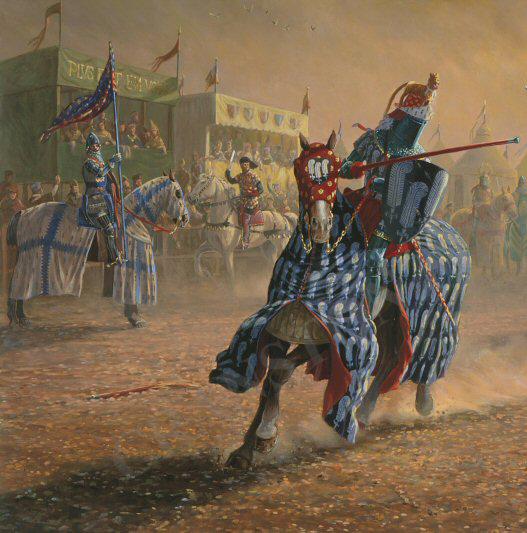 During the Middle Ages, our distinguished House was among the select few esteemed knights in medieval Europe personally marshalled by the King of Bohemia to represent the Crown of Bohemia in Imperial-Royal knights' tournaments. Documented in medieval chronicles, we were recognised as formidable tournament victors.
During the Middle Ages, our distinguished House was among the select few esteemed knights in medieval Europe personally marshalled by the King of Bohemia to represent the Crown of Bohemia in Imperial-Royal knights' tournaments. Documented in medieval chronicles, we were recognised as formidable tournament victors.
Today, our family's coat of arms remains displayed with prestige in significant locations, such as the historic Schallaburg Castle and its knights' tournament court in Austria. This property was once owned by the barons von Losenstein, famed for the Losensteiner Tournament of 25th May 1521 in Linz.
This event took place a day prior to celebrating the marriage ceremony in Linz Parish Church between Archduke Ferdinand I of Austria (later Holy Roman Emperor), and Anne, heiress of Bohemia and Hungary. At that time, festivals and knights' tournaments were staged across Austria, bringing nobles from many nations to Linz to celebrate the union.
A marriage of paramount importance to the Habsburg family, it is believed to have laid the foundations for one of Europe's the most powerful empires—the Austro-Hungarian Empire.
 During the 16th century, amid the Age of Discovery and the Renaissance, our noble House was one of the first envoys and explorers to establish Polish diplomatic and cultural encounter with the East and West Indies, as well as regions of sub-Saharan Africa, Arabia, and Persia.
During the 16th century, amid the Age of Discovery and the Renaissance, our noble House was one of the first envoys and explorers to establish Polish diplomatic and cultural encounter with the East and West Indies, as well as regions of sub-Saharan Africa, Arabia, and Persia.
At the turn of the 17th century, as the English began to colonise the east coast of America—most notably at the Jamestown settlement in Virginia—we advised our compatriots to avoid the "New World" in the Americas. Instead, we encouraged a strategic focus on more familiar and advantageous opportunities by expanding eastward, particularly into the Tsardom of Muscovy (Russia).
Members of our noble House have held significant positions throughout history. During the 16th century, we were the historical founders of the Protestant Reformation (Calvinism) in the Duchy of Oświęcim (Herzogtum Auschwitz) and the Duchy of Zator (Herzogtum Zator).
Beyond religious leadership, we held esteemed offices as Chancellor of Kraków, senators, and royal envoys of the Crown of the Kingdom of Poland, as well as Lord Chief Justice of the Duchy of Zator and Oświęcim. Furthermore, we held positions as State Governors (Landeshauptmann) and as the most senior officer and steward of the Imperial Court in the Lands of the Bohemian Crown.
Our roles were particularly notable during the Thirty Years' War conflicts in central Europe (1618–1648), and during the Seven Years' War (1756–1763), where members of our House held command (Rittmeister) of the Cuirassier Regiment Archduke Ferdinand and the Cavalry Regiment Zweibrücken.
In addition to these roles, members of our noble House were commended philosophers and political writers, contributing to notable medieval works such as Status Venetorum sive Brevis tractatus de origine et vetustate Venetorum (1604) (The state of the Venetians, or a short treatise concerning the origin and antiquity of the Venetians) and Kolęda moskiewska (1609) (The Muscovite carol).
The latter work, commissioned by the Royal Chancellery of Poland, was intended as a New Year's levy (carol) for deputies at the general assembly of parliament in January 1609. Its purpose was to persuade them to support and finance King Sigismund III Vasa's planned expedition to Muscovy (Moscovia; Tsardom of Muscovy). It remains one of the most politically charged anti-Russian levies in Polish history, now analyzed through a post-colonial discourse.
The work advanced two main arguments: an ethical justification—the necessity of avenging past harms suffered by the Polish state and reclaiming territories once taken by Muscovy; and a pragmatic rationale—highlighting the Muscovite state's instability, which provided a unique opportunity for a swift and decisive invasion. Additionally, it addressed internal challenges within the Crown of the Kingdom of Poland, including overpopulation and Tatar raids along the eastern borders, arguing that colonization of a neighboring state was the solution.
In 1609, with parliamentary backing, King Sigismund III Vasa declared war on Muscovy, marking the beginning of the Polish–Muscovite invasion.
Our historical territorial family name
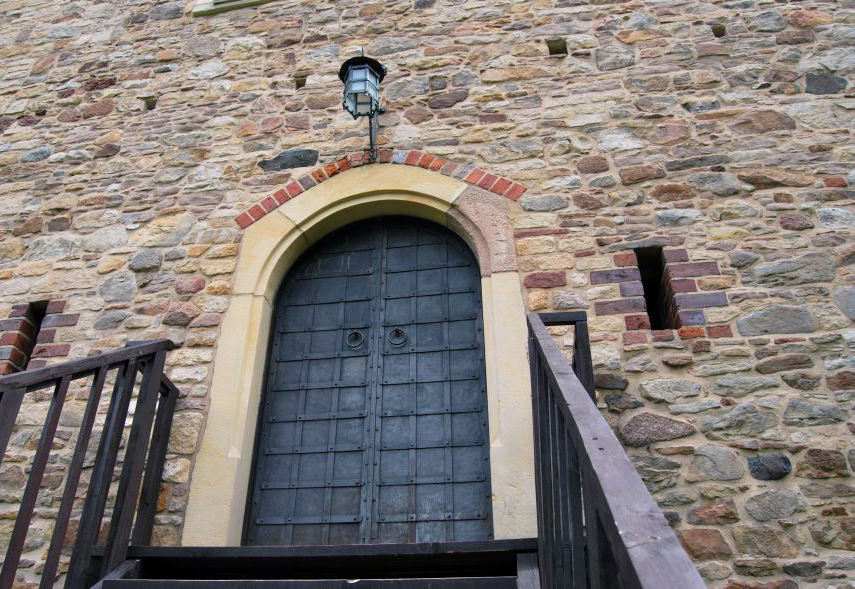 Our noble House and family name derives from our territorial provenance in the Margraviate of Meissen (Saxony) at the turn of the second millennium AD. In medieval chancellery-language (Kanzleisprache), our territorial noble family name appears consistently across medieval Latin, Middle High German, and Old Sorbian Slavic orthography. It is rendered as Schassowe, Schassow, Scassow[e], Zcassowe (legitur Skashov), as well as Zkassowe or Kassowe. The nobiliary particle preposition is either Latin de Schassowe or German von Schassowe, with variations in medieval Latin also including de Sasovius or de Sashovius.
Our noble House and family name derives from our territorial provenance in the Margraviate of Meissen (Saxony) at the turn of the second millennium AD. In medieval chancellery-language (Kanzleisprache), our territorial noble family name appears consistently across medieval Latin, Middle High German, and Old Sorbian Slavic orthography. It is rendered as Schassowe, Schassow, Scassow[e], Zcassowe (legitur Skashov), as well as Zkassowe or Kassowe. The nobiliary particle preposition is either Latin de Schassowe or German von Schassowe, with variations in medieval Latin also including de Sasovius or de Sashovius.
Later, during our expansion across the lands of the Bohemian Crown, Greater and Lesser Poland, and the Duchies of Silesia, our territorial noble family name was equally rendered as Szassowe, Szassow, Szaszow, Saszow (legitur Shashov, equally Sashov).
Throughout medieval history, our family name has seen minor spelling variations due to differences in medieval Latin, German, and Slavic languages. These changes resulted from phonetic shifts, between sk and sch, ss (long-s), and the Latin script sz-digraph. Consequently, our name has been documented in various forms, such as Ssassow, Sassow, Sasow, Sasov, Shachoviz, Szachowic, Schaschowitz, Schaschowicz, Schachowicz, Schazouwe, Chachowitz, and Chachowicz.
Our possessive West Slavic territorial noble family name, Saschowsky and Saszowski (equally Schaschowsky and Szaszowski), originates from our German noble House name von Schassowe and has been rendered in multiple variations. These include Saschowski, Schaschowski, Sassowski, Schaszowsky, Schassowsky, Szassowski, Ssaszowski, Ssassowski, Ssassowsky, Sasowski, and Szaszewski. The feminine form, Saszowska (Szaszowska), is borne by the gracious female members of our House.
At times, our noble House has also been referred to by our cognomen de Schaschor, de Szaszor, or de Saszor (legitur Shashor, equally Sashor).
It was also customary for our family to often assume, or equally be known by, the names of our subsequently acquired Lordship domains. This practice led to family members bearing or adopting dual Slavic and German Lordship domain aliases.
For example, we were known as Schaschowsky von Geraltowitz or Geraltowsky von Geraltowitz, with variations such as Geraltowski and Geroltowsky. In Bohemian-Czech, we were known as Geraltovsky z Geraltovic, while Polish referred to us as Gierałtowski z Gierałtowic.
Similarly, we also bore the names Schaschowsky von Palczowitz, Palczowsky, or Palczowski von Palczowitz, later also documented as Palczewski and Paliszewski. Another alias included Schaschowsky von Wilamowic (Wilmesua) or Wilamowski von Wilmesau, known in Polish as Wilamowski z Wilamowic.
Our noble House also established in the 1500s, through the union of marriage, the fourth-generation family line of the Bohemian-Moravian princely House of Kaunitz (Haus Kaunitz). The son from this line, Andreae, went on to become the Imperial-Royal Chamberlain of the Habsburg Monarchy and an ambassador dispatched to engage with King James I of England and Ireland.
From the 1500s onward, our noble House welcomed matrimonial unions with the Polish princely house of Lubomirscy (Lubomirski). Additionally, through marriage, we welcomed Teodozja (Theodosia), the daughter of Joachim, son of Marcin Bielski.
Both Marcin and Joachim were of Polish noble birth—courtiers and soldiers—but they became best known as prominent writers and historians of the Renaissance period in Poland. Marcin Bielski, regarded as the 'father of Polish prose', was the first to employ the Polish language in scholarly works at a time when medieval Latin remained dominant. His son Joachim later ascended to the position of royal secretary to King Sigismund III of Poland.
Our Personal Teutonic Family Coat of Arms and our distinct Polish Armorial-Estate Arms
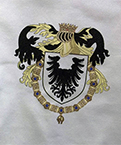 During the Middle Ages, our noble House received the Eagle in our personal coat of arms by His Imperial Majesty of the German Nation (lat. regnum Teutonicum, Ger. regnum Germanie), also known as the King of the Romans and Holy Roman Emperor. In its original form, our personal coat of arms and emblem was first borne by our princely house with the Eagle and eagle's head displayed. In heraldic terminology, this is known as blazoned: Argent an eagle displayed Sable.
During the Middle Ages, our noble House received the Eagle in our personal coat of arms by His Imperial Majesty of the German Nation (lat. regnum Teutonicum, Ger. regnum Germanie), also known as the King of the Romans and Holy Roman Emperor. In its original form, our personal coat of arms and emblem was first borne by our princely house with the Eagle and eagle's head displayed. In heraldic terminology, this is known as blazoned: Argent an eagle displayed Sable.
However, during the medieval period, subsequent historical events led to a subtle yet significant change in our personal coat of arms. The first of these events arose from a succession conflict among the princely brothers of our paternal estates—a dispute that ultimately culminated in fratricide. As a penalty for this misdeed, the judicature imposed a requital upon the alleged perpetrator. Consequently, our forebear and his descendants were mandated to bear a modified coat of arms, depicting an eagle displayed but headless. This was known in heraldic terminology as blazoned: Argent an eagle displayed head couped Sable.
Our successive family ancestors, who during the medieval period valiantly surpassed our forebear's misdeed, saw our personal coat of arms distinguished and honoured by His Imperial Majesty, the Holy Roman Emperor, who alongside expressed that the terror conveyed by our personal coat of arms is not an error. This recognition led to the inclusion of a star heraldic charge, substituting our former couped eagle's head, along with an emblematic change in tincture. Our distinguished and honoured personal coat of arms became known in heraldic terminology as blazoned: Gules an eagle displayed head couped Argent charged on the neck with a star of six rays and membered Or.
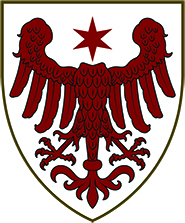 During the late medieval period, our family's expansion into the Polish lands under the Piast dynasty established us as the primary progenitor and suzerain of the distinct Orla (Eagle) heraldic armorial-estate arms of Poland. While this esteemed Orla arms was later bestowed upon several distinguished Polish figures without familial or marital ties to our House, it remained chiefly associated with our noble lineage, distinguished by our cognomen, the Saszor (Szaszor) arms.
During the late medieval period, our family's expansion into the Polish lands under the Piast dynasty established us as the primary progenitor and suzerain of the distinct Orla (Eagle) heraldic armorial-estate arms of Poland. While this esteemed Orla arms was later bestowed upon several distinguished Polish figures without familial or marital ties to our House, it remained chiefly associated with our noble lineage, distinguished by our cognomen, the Saszor (Szaszor) arms.
The Orla heraldic armorial-estate arms became an integral part of Polish heraldry, deriving from our family's personal coat of arms—the precursor to the reverse-tinctured Orla arms. In heraldic terminology, this is blazoned: Argent an eagle displayed head couped charged on the neck with a star of six rays Gules.
~ Back to Introduction Page ~
~ Back to Homepage ~
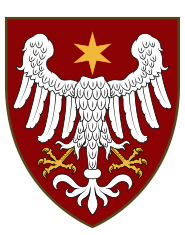
THE HOUSE OF SASZOWSKI VON SCHASSOWE
The Secretariat Office
Franz-Joseph-Straße 11
D-80801 München
Federal Republic of Germany
Contact and General Enquiries to:
secretariat.office {at} vonschassowe.org
Copyright © The House of Saszowski von Schassowe. All rights reserved.
Contents of this website are protected by copyright and governed by legal restrictions independent of the copyright status.
Terms of Use | Privacy Policy